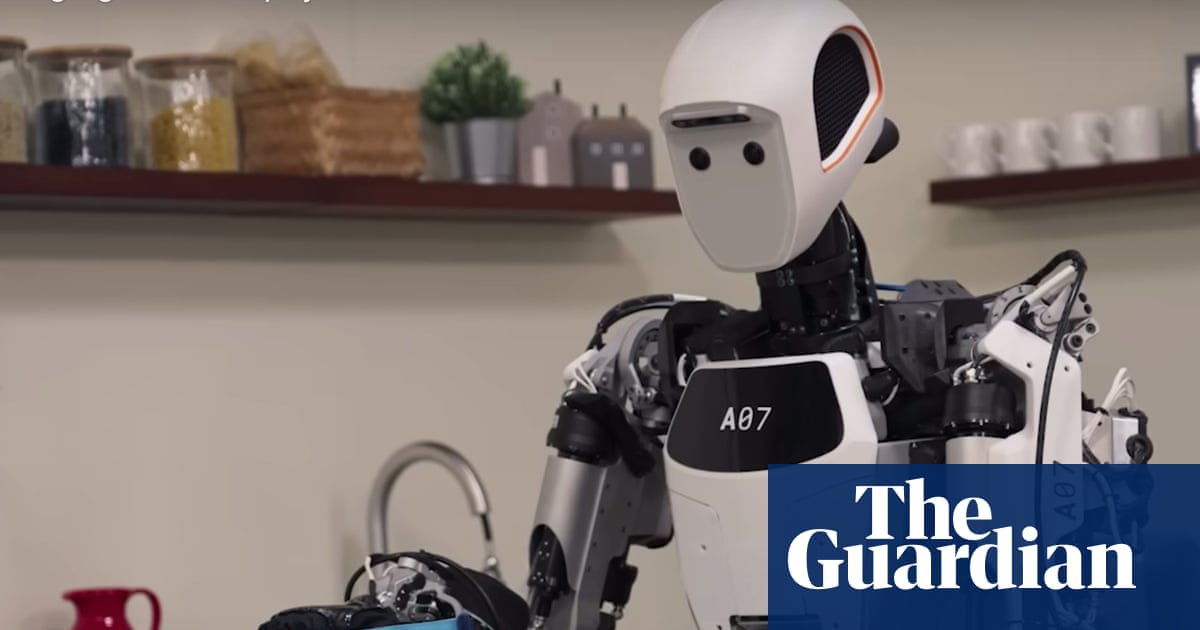Google has outlined its latest step towards artificial general intelligence (AGI) with a new model that allows AI systems to interact with a convincing simulation of the real world.
The Genie 3 “world model” could be used to train robots and autonomous vehicles as they engage with realistic recreations of environments such as warehouses, according to Google.
The US technology company’s AI division, Google DeepMind, argues that world models are a key step to achieving AGI, a hypothetical level of AI where a system can carry out most tasks on a par with humans – rather than just individual tasks such as playing chess or translating languages – and potentially do someone’s job.
DeepMind said such models would play an important role in the development of AI agents, or systems that carry out tasks autonomously.
“We expect this technology to play a critical role as we push toward AGI, and agents play a greater role in the world,” DeepMind said.
However, Google said Genie 3 was not yet ready for full public release and did not give a date for its launch, adding that the model had a range of limitations.
The announcement comes amid ever-increasing competition in the AI market. On Sunday Sam Altman, the chief executive of ChatGPT’s developer, OpenAI, shared a screenshotof what appeared to be the company’s latest AI model, GPT-5.
Google said its world model could also help humans to experience a range of simulations for training or exploring, replicating experiences such as skiing or walking around a mountain lake. Genie 3 creates its scenarios immediately from text prompts, according to DeepMind, and the simulated environment can be altered quickly – by for instance, introducing a herd of deer on to a ski slope – with further text prompts.
The tech company showed the Genie 3-created skiing and warehouse scenarios to journalists on Monday but is not yet releasing the model to the public. The quality of the simulations seen by the Guardian are on a par with Google’s latest video creation model, Veo 3, but they last minutes rather than the eight seconds offered by Veo 3.
While AGI has been viewed through the prism of potentially eliminating white-collar jobs, as autonomous systems carry out an array of roles from sales agent to lawyer or accountant, world models are viewed by Google as a key technology for developing robots and autonomous vehicles.
For instance, a recreation of a warehouse with realistic physics and people could help to train a robot, as a simulation it “learned” from in training helps it achieve its goal. Google has also created a virtual agent, Sima, which can carry out tasks in video game settings although, like Genie 3, it is not publicly available.
skip past newsletter promotion
Sign up to Business Today
Get set for the working day – we’ll point you to all the business news and analysis you need every morning
Privacy Notice: Newsletters may contain info about charities, online ads, and content funded by outside parties. For more information see our Privacy Policy. We use Google reCaptcha to protect our website and the Google Privacy Policy and Terms of Service apply.
after newsletter promotion
Prof Subramanian Ramamoorthy, the chair of robot learning and autonomy at the University of Edinburgh, said world models were “extremely important” for robot development, adding: “To achieve flexible decision-making robots need to anticipate the consequences of different actions to choose the best one to execute in the physical world.”
Andrew Rogoyski of the Institute for People-Centred AI at the University of Surrey, said world models could also help large language models – the technology that underpins chatbots such as ChatGPT.
“If you give a disembodied AI the ability to be embodied, albeit virtually, then the AI can explore the world, or a world – and grow in capabilities as a result,” he said.
“While AIs are trained on vast quantities of internet data, allowing an AI to explore the world physically will add an important dimension to the creation of more powerful and intelligent AIs.”
In a research note accompanying the Sima announcement last year, Google researchers said world models were important because large language models were effective at tasks such as planning but not at taking action on a human’s behalf.
